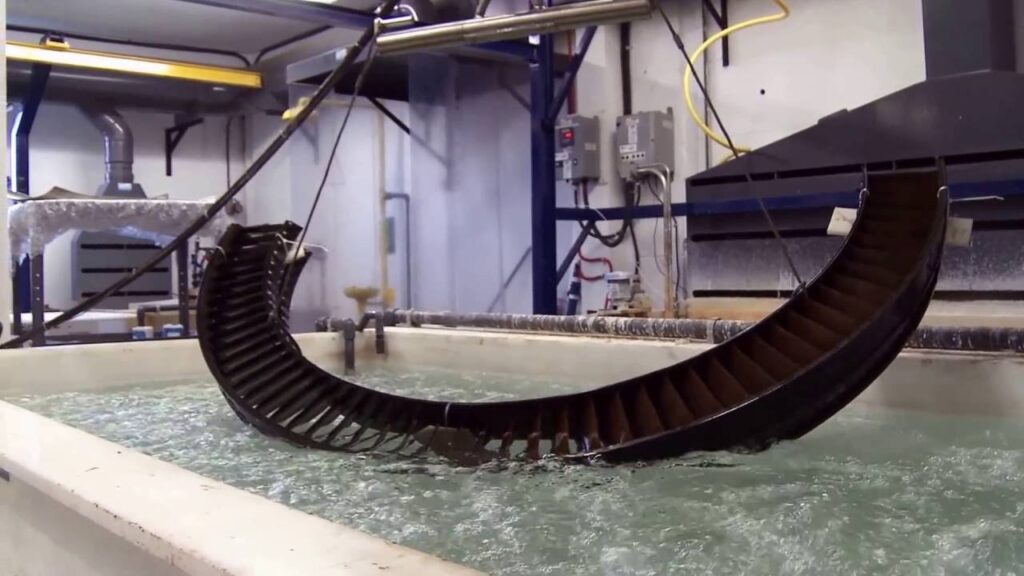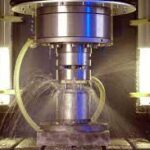In chemical milling, shallow cavities are produced on plates, sheets, Forgings and extrusions. The two key materials used in chemical milling process are etchant and maskant. Etchants are acid or alkaline solutions maintained within controlled ranges of chemical composition and temperature. Maskants are specially designed elastomeric products that arehand strippable and chemically resistant to the harsh etchants.
Steps in chemical milling
• Residual stress relieving: If the part to be machined has residual stresses from the previous processing, these stresses first should be relieved in order to prevent warping after chemical milling.
• Preparing: The surfaces are degreased and cleaned thoroughly to ensure both good adhesion of the masking material and the uniform material removal.
• Masking: Masking material is applied (coating or protecting areas not to be etched).
• Etching: The exposed surfaces are machined chemically with etchants.
• Damasking: After machining, the parts should be washed thoroughly to prevent further reactions with or exposure to any etchant residues. Then the rest of the masking material is removed and the part is cleaned and inspected.
Applications:
Chemical milling is used in the aerospace industry to remove shallow layers of material from large aircraft components missile skin panels (Figure 7), extruded parts for airframes.

Figure: Missile skin-panel section contoured by chemical milling to improve the stiffness- to- weight ratio of the part

